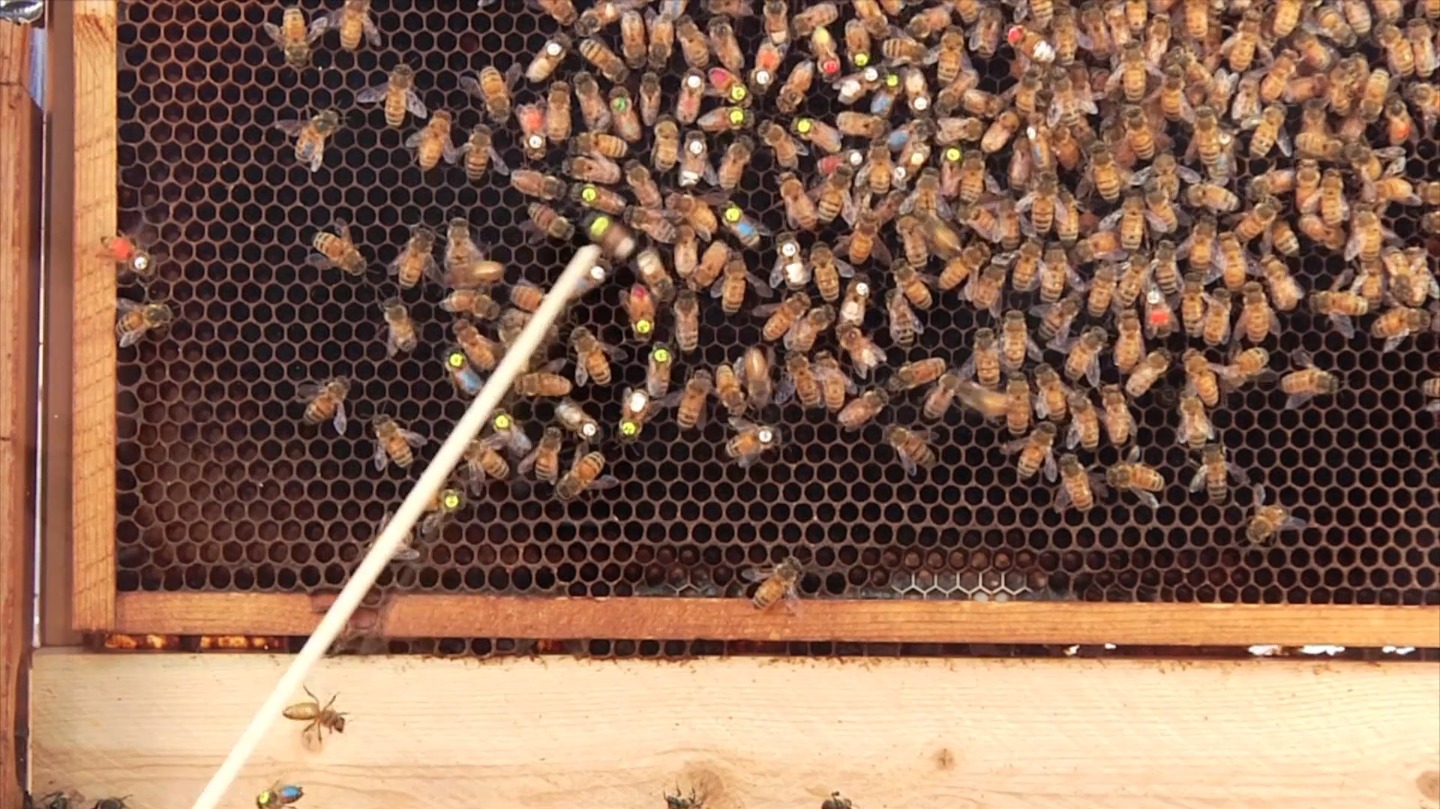Discover the waggle dance of the honey bee
Act out and model the honey bee waggle dance using paper cutouts and a compass, mapping direction and distance through angles and experiments.



Step-by-step guide to discover the waggle dance of the honey bee
The Waggle Dance | Inside the Animal Mind | BBC
Step 1
Cut two bee shapes from paper about the size of your palm.
Step 2
Decorate the paper bees with stripes eyes and wings using your coloring materials.
Step 3
Cut at least three different paper flower shapes.
Step 4
Color each flower a different bright color so they are easy to tell apart.
Step 5
Make a hive base by drawing a circle on paper or placing a small box lid on the floor.
Step 6
Put the compass on the hive and use it to find magnetic North then mark North on the hive with your pencil.
Step 7
Use the protractor at the hive center to draw three rays at different angles from North and label each ray with its angle.
Step 8
Use the ruler to measure and mark three distances along each ray (for example short medium and far).
Step 9
Place a different paper flower at each marked spot and secure each flower with a small piece of tape.
Step 10
Create a waggle code on the hive by writing how many waggles mean near medium and far and a note that the dance angle points to the flower.
Step 11
Stand on the hive and face the angle that points to the flower you picked.
Step 12
Perform the waggle dance by waggling the number of times from your code while pointing your body in that angle.
Step 13
Ask a friend or family member to watch your dance then go find the flower by following the direction and distance you danced.
Step 14
Swap roles and repeat the dance at least two more times with different flowers to test your code.
Step 15
Share your finished creation and what you discovered on DIY.org.
Final steps
You're almost there! Complete all the steps, bring your creation to life, post it, and conquer the challenge!


Help!?
What can we use instead of a compass, protractor, or ruler if we don't have them?
Use a smartphone compass app to find magnetic North for the hive base, a printed or folded-paper protractor to draw the rays, and a length of string or counted footsteps instead of a ruler to mark the short, medium, and far distances for the flowers.
Why does my compass keep pointing the wrong way or my flowers fall off the marked spots?
Move the hive base away from metal objects and electronics and hold the compass flat to get a steady North reading, and secure each paper flower with stronger tape or a small paperclip so they stay at the measured marks.
How can I make this activity easier for younger kids and more challenging for older ones?
For younger children, an adult can pre-cut and decorate the paper bees and flowers and use a box lid hive with only two rays and three obvious distances so the child just points and waggles, while older kids can use the protractor and ruler to record exact angles and distances, create a numeric waggles-to-distance code, and test accuracy over multiple trials.
How can we extend or personalize the waggle dance activity?
Decorate a larger hive base or use a box lid, make a waggle-code poster showing how many waggles mean near/medium/far, add scents or photos to the paper flowers, video-record dances and results, and then share your decorated bees, flowers, and findings on DIY.org.
Watch videos on how to discover the waggle dance of the honey bee
What's Waggle Dance of the Honeybee? | How bees communicate?
Facts about bee communication and navigation
☀️ Bees use a time-compensated sun compass — they adjust the dance angle as the sun moves across the sky.
⏱️ The length of the waggle run encodes distance: longer runs signal farther food sources.
📣 A single enthusiastic waggle dance can recruit many foragers — whole teams of bees may fly to the new food spot.
🎓 Karl von Frisch decoded the waggle dance and won the 1973 Nobel Prize for discoveries about bee communication.
🐝 The waggle dance tells other bees direction by the angle of the waggle run relative to vertical (which stands for the sun’s direction).
How do you do the honey bee waggle dance activity with paper cutouts and a compass?
What materials do I need for the honey bee waggle dance activity?
What ages is the waggle dance activity suitable for?
What are the benefits and safety tips for the waggle dance experiment?


One subscription, many ways to play and learn.
Only $6.99 after trial. No credit card required



